View in other NatureServe Network Field Guides
NatureServe
Montana
Utah
Wyoming
Idaho
Wisconsin
British Columbia
South Carolina
Yukon
California
New York
Lesser Rushy Milkvetch - Astragalus convallarius
Other Names:
Astragalus diversifolius [misapplied]
State Rank Reason (see State Rank above)
The distribution of A. convallarius in Montana is limited to two disjuct localities in the state: the Helena Valley vicinity and an area in extreme southwest Montana in Beaverhead County. The species has been and continues to be negatively impacted by development in the Helena area. Past development in the Helena Valley likely eliminated extensive areas of previously occupied habitat resulting in the more fragmented distribution seen today. The grassland habitats this species occupies are also being invaded by several noxious weeds, partcularly in the Helena vicinity. However, the species appears to tolerate some levels of disturbance and degradation of habitat quality.
Several large occurrences are presently known and some areas of potentially suitable habitat remain unsurveyed.
- Details on Status Ranking and Review
Population Size
Score1 - Moderate: Generally 10,000-100,000 individuals.
Range Extent
Score1 - Peripheral, Disjunct or Sporadic Distribution in MT: Widespread species that is peripheral, disjunct or sporadically distributed within MT such that it occurs in <5% of the state (<7,500 sq. miles or the combined area of Beaverhead and Ravalli Counties) or is restricted to 4-5 sub-basins.
Area of Occupancy
Score1 - Moderate: Generally occurring in 11-25 Subwatersheds (6th Code HUC’s).
Environmental Specificity
Score1 - Moderate: Species is restricted to a specific habitat that is more widely distributed or to several restricted habitats and is typically dependent upon relatively unaltered, good-quality habitat (C Values of 5-7).
CommentSpecies appears to be tolerant of some habitat disturbance and has been observed growing in areas planted/dominated with hard fescue.
Trends
Score1-2 - Minor to Moderate Declines:
CommentMonitoring data are lacking though development has directly impacted populations and habitat in the Helena Valley and surrounding area over the last few decades.
Threats
Score1-2 - Medium to High.
CommentWeed invasion, urban development and land-use activities in the Helena Valley and surrounding areas are impacting some populations and habitat. However, large areas of occupied habitat are in public ownership offering some degree of protection.
Intrinsic Vulnerability
Score0-1 - Low to Moderate Vulnerability.
Raw Conservation Status Score
Score
6 to 9 total points scored out of a possible 19.
General Description
Lesser Rushy Milkvetch is a slender herbaceous perennial with 1-6 erect to spreading stems, rising up to 5 dm high from a branching, underground rootcrown. The compound or simple leaves are 2-11 cm long with 0-5 pairs of thread-like leaflets. Leaflets of the upper leaves are usually lacking, giving them a grass-like appearance. Foliage is sparsely hairy to glabrous in the upper portion. Off-white or yellowish, pea-like flowers are sparsely scattered on stalks which are 2-14 cm long and arise from the axils of the upper leaves. The upper petal of each flower is 7-11 mm long and bent upward. The calyx is 4-6 mm long and sparsely covered with white or black hairs. Pendent, green or purple-mottled fruits are bean-shaped, 13-50 mm long, and 2-4 mm wide.
Phenology
Flowering from June-early July, fruiting in late June-early August.
Diagnostic Characteristics
Only the typical variety of the species is known in the state. A. ceramicus looks similar in appearence but can be distinquished by the shorter calyx tube (2-3.5 mm long) and the inflated, oblong-ellipsoid pods, whereas the pods of A. convallarius are compressed and linear to oblong.
A. convallarius has sometimes been lumped with the species A. diversifolius.
Species Range
Montana Range
Range Descriptions
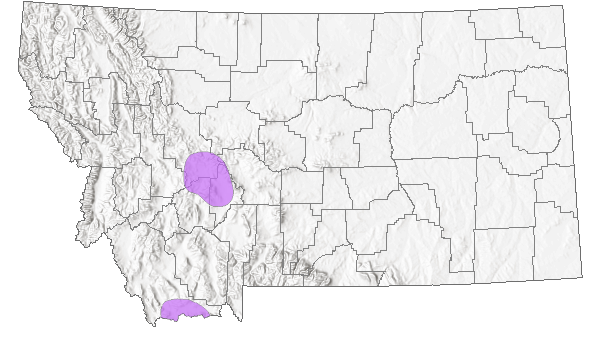
 Native
Native
Range Comments
ID, MT south to NV, UT and CO (Lesica et al. 2012. Manual of Montana Vascular Plants. BRIT Press. Fort Worth, TX).
Observations in Montana Natural Heritage Program Database
Number of Observations: 107
(Click on the following maps and charts to see full sized version)
Map Help and Descriptions
Relative Density
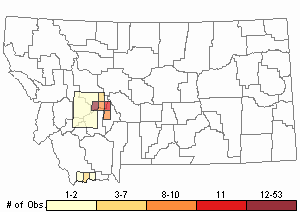
Recency
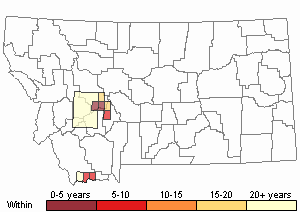
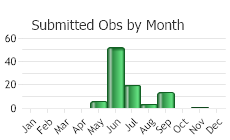
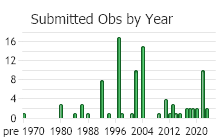
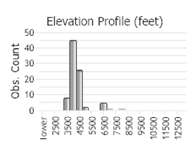 (Observations spanning multiple months or years are excluded from time charts)
(Observations spanning multiple months or years are excluded from time charts)
Habitat
Grasslands and open ponderosa pine woodlands in the valley and foothills. Festuca scabrella, Festuca idahoensis and Elymus spicatus are common bunchgrass associates.
National Vegetation Classification System Groups Associated with this Species
Forest and Woodland
Low Elevation - Xeric Forest and Woodland
Shrubland
Sagebrush Shrubland
Grassland
Lowland - Prairie Grassland
Ecology
POLLINATORS The following animal species have been reported as pollinators of this plant species or its genus where their geographic ranges overlap:
Bombus vagans,
Bombus appositus,
Bombus auricomus,
Bombus bifarius,
Bombus borealis,
Bombus centralis,
Bombus fervidus,
Bombus flavifrons,
Bombus huntii,
Bombus mixtus,
Bombus nevadensis,
Bombus rufocinctus,
Bombus ternarius,
Bombus terricola,
Bombus occidentalis,
Bombus pensylvanicus,
Bombus griseocollis, and
Bombus insularis (Macior 1974, Thorp et al. 1983, Mayer et al. 2000, Colla and Dumesh 2010, Wilson et al. 2010, Koch et al. 2012, Miller-Struttmann and Galen 2014, Williams et al. 2014).
Stewardship Responsibility
Threats or Limiting Factors
STATE THREAT SCORE REASON
Reported threats to Montana's populations of Lesser Rushy Milkvetch are related to urban activity because its habitat is concentrated around the Helena Valley (MTNHP Threat Assessment 2021). Several populations are presumed lost to urban development. While some populations are protected from direct land conversion, suitable habitat is increasingly lost to infrastructure and related fragmentation. Human activity threatens several extant populations where they are exposed to trampling from recreational hiking and off-highway vehicle (OHV) use is concentrated. Noxious weeds including Spotted Knapweed (Centaurea stoebe), Dalmatian Toadflax (Linaria dalmatica), and Leafy Spurge (Euphorbia virgata) occur with many populations, some of which are severe. Fire suppression poses another threat as Lesser Rushy Milkvech habitat will shrink as conifer canopy expands.
References
- Literature Cited AboveLegend:
 View Online Publication
View Online Publication Colla, S.R. and S. Dumesh. 2010. The bumble bees of southern Ontario: notes on natural history and distribution. Journal of the Entomological Society of Ontario 141:39-68.
Colla, S.R. and S. Dumesh. 2010. The bumble bees of southern Ontario: notes on natural history and distribution. Journal of the Entomological Society of Ontario 141:39-68. Koch, J., J. Strange, and P. Williams. 2012. Bumble bees of the western United States. Washington, DC: USDA Forest Service, Pollinator Partnership. 143 p.
Koch, J., J. Strange, and P. Williams. 2012. Bumble bees of the western United States. Washington, DC: USDA Forest Service, Pollinator Partnership. 143 p. Lesica, P., M.T. Lavin, and P.F. Stickney. 2012. Manual of Montana Vascular Plants. Fort Worth, TX: BRIT Press. viii + 771 p.
Lesica, P., M.T. Lavin, and P.F. Stickney. 2012. Manual of Montana Vascular Plants. Fort Worth, TX: BRIT Press. viii + 771 p. Macior, L.M. 1974. Pollination ecology of the Front Range of the Colorado Rocky Mountains. Melanderia 15: 1-59.
Macior, L.M. 1974. Pollination ecology of the Front Range of the Colorado Rocky Mountains. Melanderia 15: 1-59. Mayer, D.F., E.R. Miliczky, B.F. Finnigan, and C.A. Johnson. 2000. The bee fauna (Hymenoptera: Apoidea) of southeastern Washington. Journal of the Entomological Society of British Columbia 97: 25-31.
Mayer, D.F., E.R. Miliczky, B.F. Finnigan, and C.A. Johnson. 2000. The bee fauna (Hymenoptera: Apoidea) of southeastern Washington. Journal of the Entomological Society of British Columbia 97: 25-31. Miller-Struttmann, N.E. and C. Galen. 2014. High-altitude multi-taskers: bumble bee food plant use broadens along an altitudinal productivity gradient. Oecologia 176:1033-1045.
Miller-Struttmann, N.E. and C. Galen. 2014. High-altitude multi-taskers: bumble bee food plant use broadens along an altitudinal productivity gradient. Oecologia 176:1033-1045. MTNHP Threat Assessment. 2021. State Threat Score Assignment and Assessment of Reported Threats from 2006 to 2021 for State-listed Vascular Plants. Botany Program, Montana Natural Heritage Program, Helena, Montana.
MTNHP Threat Assessment. 2021. State Threat Score Assignment and Assessment of Reported Threats from 2006 to 2021 for State-listed Vascular Plants. Botany Program, Montana Natural Heritage Program, Helena, Montana. Thorp, R.W., D.S. Horning, and L.L. Dunning. 1983. Bumble bees and cuckoo bumble bees of California (Hymenoptera: Apidae). Bulletin of the California Insect Survey 23:1-79.
Thorp, R.W., D.S. Horning, and L.L. Dunning. 1983. Bumble bees and cuckoo bumble bees of California (Hymenoptera: Apidae). Bulletin of the California Insect Survey 23:1-79. Williams, P., R. Thorp, L. Richardson, and S. Colla. 2014. Bumble Bees of North America. Princeton, NJ: Princeton University Press. 208 p.
Williams, P., R. Thorp, L. Richardson, and S. Colla. 2014. Bumble Bees of North America. Princeton, NJ: Princeton University Press. 208 p. Wilson, J.S., L.E. Wilson, L.D. Loftis, and T. Griswold. 2010. The montane bee fauna of north central Washington, USA, with floral associations. Western North American Naturalist 70(2): 198-207.
Wilson, J.S., L.E. Wilson, L.D. Loftis, and T. Griswold. 2010. The montane bee fauna of north central Washington, USA, with floral associations. Western North American Naturalist 70(2): 198-207.
- Additional ReferencesLegend:
 View Online Publication
View Online Publication
Do you know of a citation we're missing? Lesica, P., M.T. Lavin, and P.F. Stickney. 2022. Manual of Montana Vascular Plants, Second Edition. Fort Worth, TX: BRIT Press. viii + 779 p.
Lesica, P., M.T. Lavin, and P.F. Stickney. 2022. Manual of Montana Vascular Plants, Second Edition. Fort Worth, TX: BRIT Press. viii + 779 p. Quire, R.L. 2013. The sagebrush steppe of Montana and southeastern Idaho shows evidence of high native plant diversity, stability, and resistance to the detrimental effects of nonnative plant species. M.Sc. Thesis. Bozeman, MT: Montana State University. 124 p.
Quire, R.L. 2013. The sagebrush steppe of Montana and southeastern Idaho shows evidence of high native plant diversity, stability, and resistance to the detrimental effects of nonnative plant species. M.Sc. Thesis. Bozeman, MT: Montana State University. 124 p.
- Web Search Engines for Articles on "Lesser Rushy Milkvetch"





